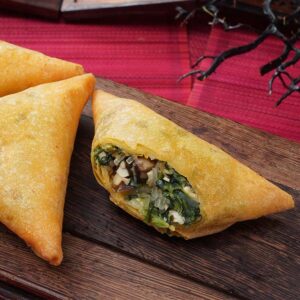If you didn’t already know, by this stage in the Lunar New Year festivities, you have probably realized that everything revolves around food.
Families sit together and eat, gather in the kitchen to cook and talk, or head to restaurants to feast on traditional dishes and catch up with each other.
It can sometimes seem to the uninitiated that people are eating anything they can find at this busiest time of the year. But, as with many festivals around the world, there are dishes that are staples of every Lunar New celebration.
To help ensure you are eating the right dishes, here is our essential guide to Lunar New Year food and the traditions behind them:
Dumpling
These little parcels of meat or vegetable loveliness can be found on just about every Lunar New Year table. The reason for this is that they are believed to bring good fortune.
A dumpling looks like an old Chinese gold nugget, which used to be legal tender in China so it’s easy to see how the association arose.
It used to be tradition to hide coins in some dumplings, with the person who found them said to be likely to enjoy extra good fortune. But these days, the coins are less common due to the risk of choking, though some families may use edible alternatives.
Pineapple cakes / Pineapples
The pineapple is traditionally associated with wealth, good fortune, and prosperity. So, it will come as no surprise that this is also part of many Lunar New Year feasts.
The pineapple itself is popular, though it is not in season at this time of year. Far more common are pineapple cakes, which are in high demand and are often used as gifts at this time of year.
You will also see pineapples appearing prominently in New Year displays in shops, markets, and even in lantern shows.
Fa-gao
Fa-gao (發糕) is most commonly translated as prosperity cake, but sometimes you will see “good luck” cake or “great wealth” cake instead.
It is a light, sweet, and fluffy cake usually served plain, without fillings or toppings.
It is believed to increase wealth and job prospects in the coming year. Whether that is true or not, it is certainly a delicious treat at the end of a Lunar New Year feast.
Mandarins
Mandarin oranges are another fruit believed to represent wealth and good fortune.
This is because the name of this fruit in Mandarin means “rich fruit” while in Cantonese it simply means “gold.”
A gift of mandarin oranges is seen as token wishing good fortune on someone. The sweeter the fruit, the better the fortune, which is why in high end stores, you can see boxes of mandarins going for astonishingly high prices.
Pork
Pork symbolizes good fortune and wealth throughout the year. But at Lunar New Year it becomes especially prominent.
Having pigs in the home used to symbolize wealth, and the left radical of the Chinese character for pig (豬) can also be found in the character for house/home (家). Pork is also believed to make you stronger too.
The most common dish you will encounter during the Lunar New Year is pigs knuckles with thin vermicelli noodles. The noodles in this dish are also thought to symbolize a long life.
Kumquat
Unlike some of the other fruits on this list, kumquats are a feature of Lunar New Year celebrations at least in part because they are in season this time of year.
But another reason is a linguistic one. The second character of Mandarin word for a kumquat (金橘) sounds very similar to the word for luck (吉), so eating kumquats is seen as a symbol of good fortune.
Turnip cake / Radish cake
Turnip cake, or radish cake, depending on which name you prefer, is also a staple on almost every Lunar New Year table, and again, this is for primarily linguistic reasons.
The Mandarin word for a turnip is “cai thou” (菜頭), which also sounds like 彩頭, or “luck.”
The vegetable will sometimes be served on its own or in other dishes, but the most common form it comes in is the scrumptious turnip cake.
Source: https://www.taiwannews.com.tw/en/news/4428531
Social Link:









